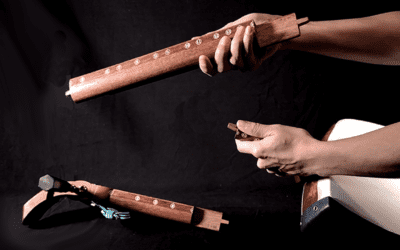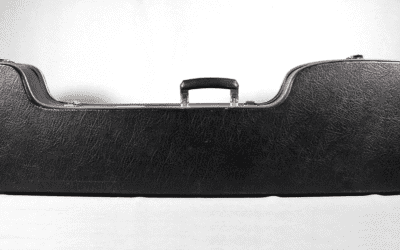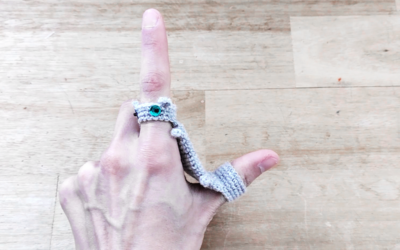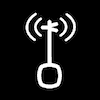Pretty Practical
Most shamisen are built so that the neck can be taken apart into three pieces. That makes them surprisingly travel-friendly despite their long neck, and it also makes transport over longer distances much safer — plus it reduces shipping costs when the instrument is sent by mail. Cheaper models have a neck carved from a single piece that can’t be disassembled. And there are even a few instruments where the neck splits into more than three parts, but that’s unusual. The principle of assembly is the same in any case.
Terminology: A neck that splits into three pieces is called mitsuori neck (三つ折り – 三つ mitsu = three, 折り ori = fold). Nobezao refers to a solid, continuous neck (延棹 – 延 nobe = extension, 棹 sao = pole/neck).
The Individual Parts
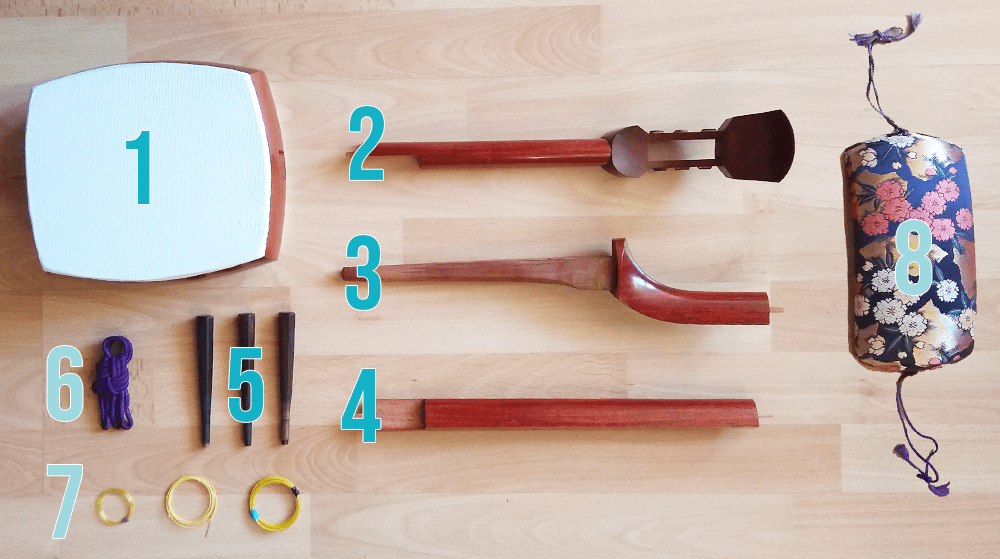
Always included:
1: body (dou)
2: upper part of the neck with head (tenjin)
3: lower part of the neck
4: middle part of the neck
5: three tuning pegs (itomaki)
Not always included, but part of a ready-to-play shamisen:
6: string holder know (neo)
7: three strings (ito)
8: body cover (doukake)
The Best Assembly Order
There’s no single correct order, but mine looks like this:
- Fit the neck pieces together
- Insert the itomaki into the tenjin
- Attach the Doukake
- Put on the neo
- String the instrument
I start with the neck to get the fragile joints secured right away and out of harm’s way. It also makes pressing the lower neck piece firmly into the body much easier since you have more material to grip. I add the itomaki only after the neck is seated in the body, since otherwise they can work loose and fall out from all the handling. The dōkake may look like decoration, but it’s easier to tie the lower knot when the neo isn’t in the way. And the strap should never go over the neo, or the doukake won’t stay tight.
The Neck
The easy fix: when connecting the pieces, keep the rounded underside of the neck facing you. If you’ve fitted it wrong, you’ll see an ugly edge immediately on the underside. The top side can be deceptively smooth, tempting you to force it together against resistance.
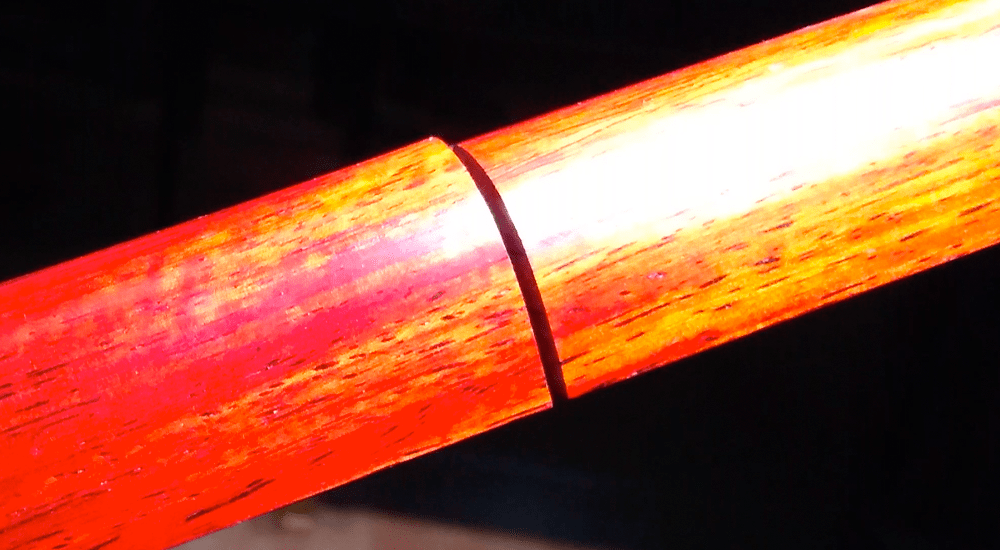
Wrong way round:
Rounded side on top → visible ridge
Straight side on bottom → deceptively smooth
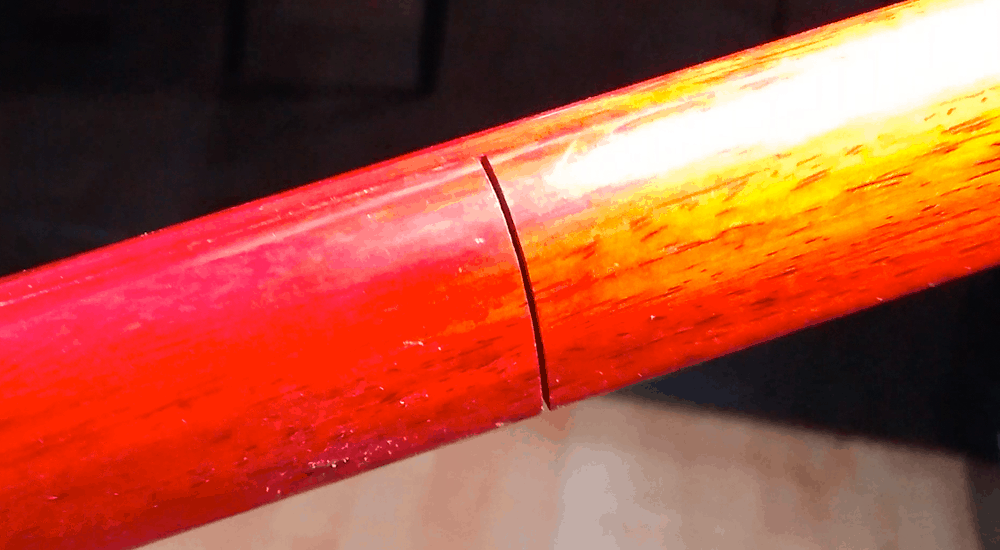
Correctly assembled:
Rounded side on bottom → smooth
Straight side on top → also smooth
If Something Jams
Bei höherpreisigen Instrumenten genügt es übrigens, genau hinzuschauen, weil jede Verbindung unterschiedlich gearbeitet ist und man direkt sehen kann, was zusammengehört und was nicht. Trotzdem passiert es auch hier, dass man mal doch nicht so genau hinguckt und dann was falsch zusammensteckt und sich verhakt.
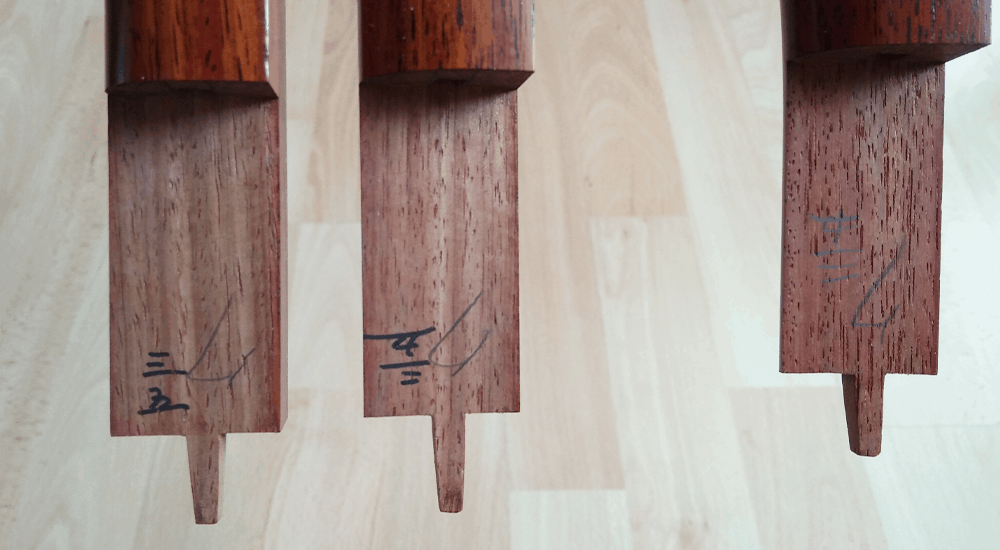
All the joints look the same and could potentially fit together.
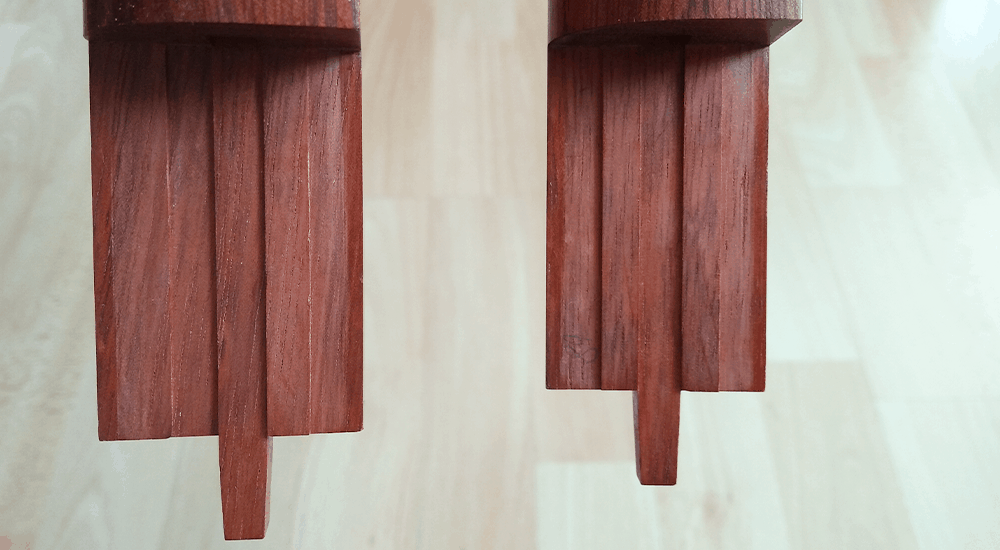
The difference between the joints is obvious: They're not a match!
Neck Through the Body
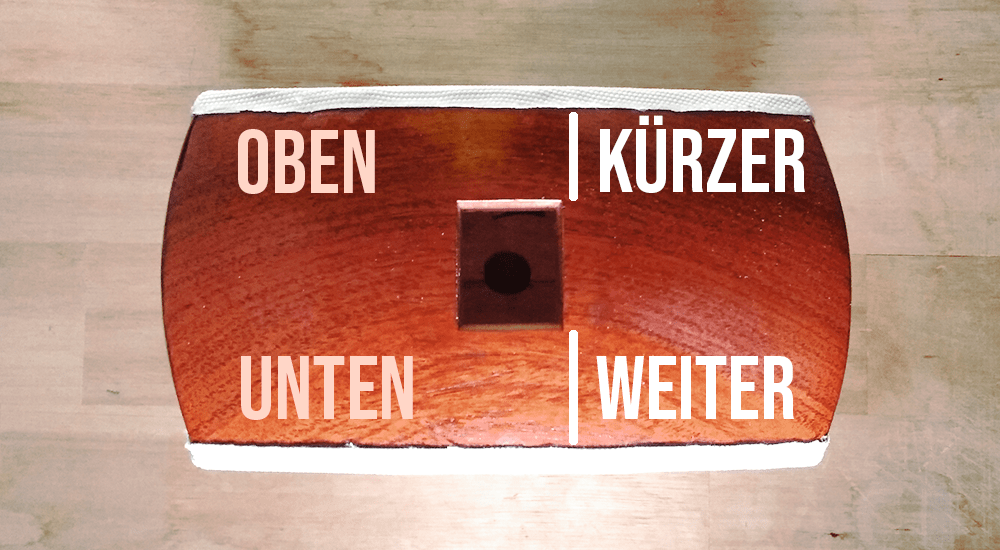
Look closely: the square hole isn’t centered. On one side the distance to the edge is shorter — that’s the top side. Because of this asymmetry, the neck orientation matters, even if it “fits” the wrong way. A backwards neck makes the string action awkward or even unplayable.
Another clue: subtle marks around the hole where the neck presses against the wood. These look like a U-shaped curve on one side and a straight line on the other, like a lid on top of the U. The curved mark indicates the back side of the body, where the rounded underside of the neck sits.
Terminology: Because the neck runs all the way through the body — literally skewering it — the shamisen is classified in Western Music as a “spiked lute.”
Itomaki in the Tenjin
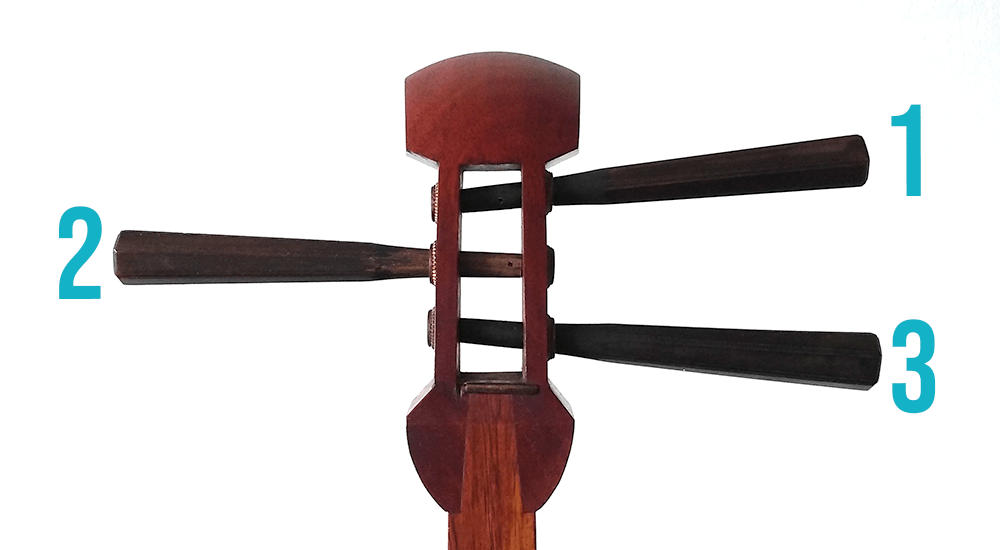
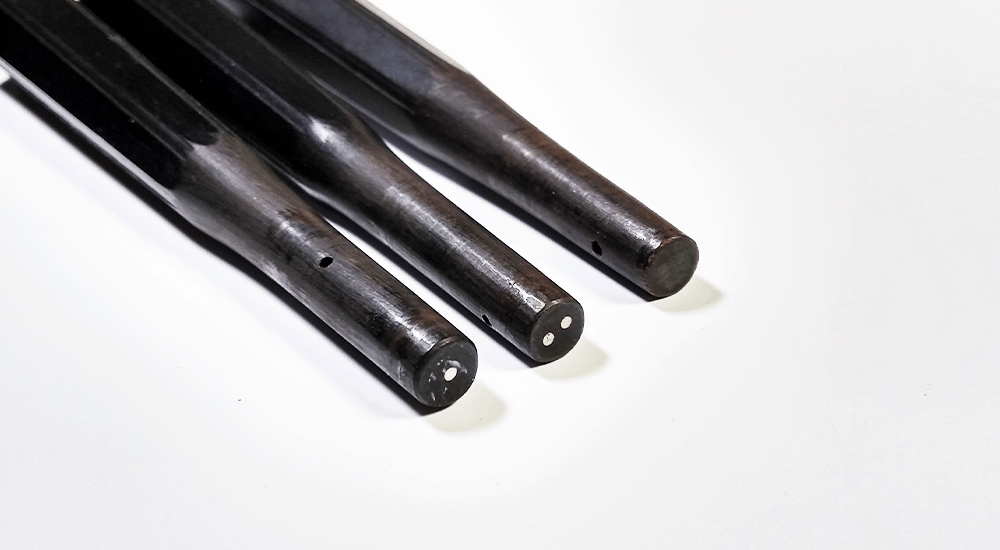
Markings with dots are at the tip.
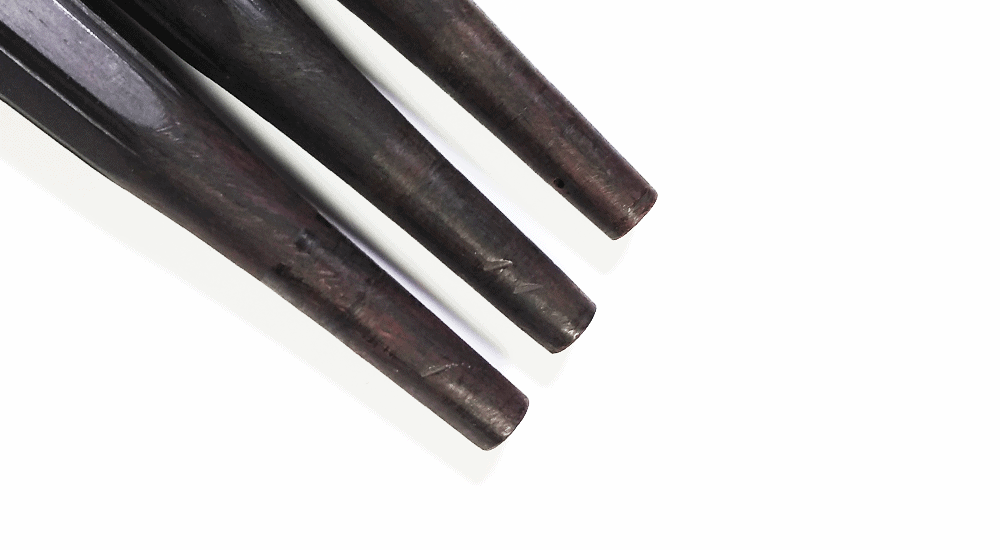
Markings with grooves are on the side.
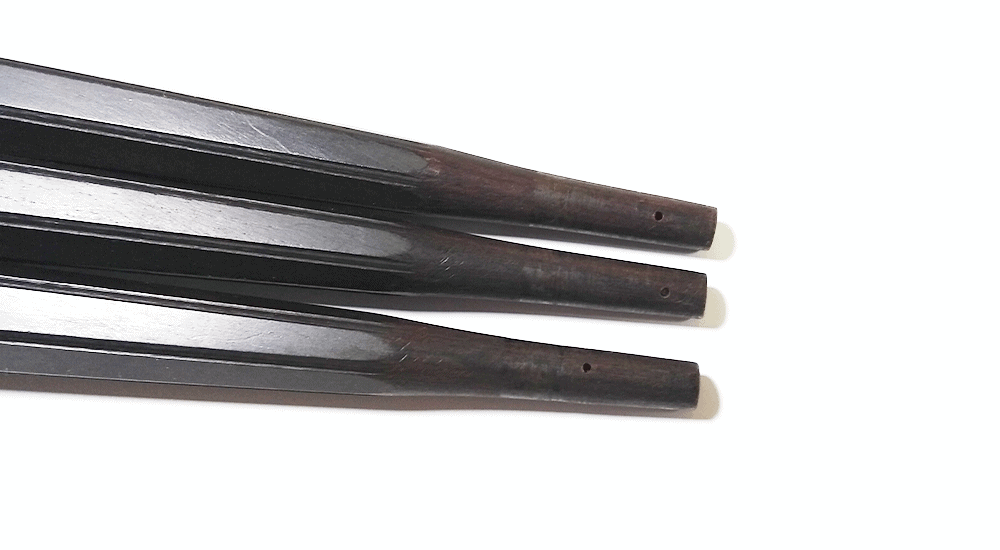
Attach the Doukake
Adding the Neo
Next Steps
Watch the video here:

Subscribe for the Newsletter
There's a monthly digest with an overview over all new articles and videos. Plus upcoming dates for the next month. And sometimes a little bonus extra 🙂
So go ahead and sign up!
